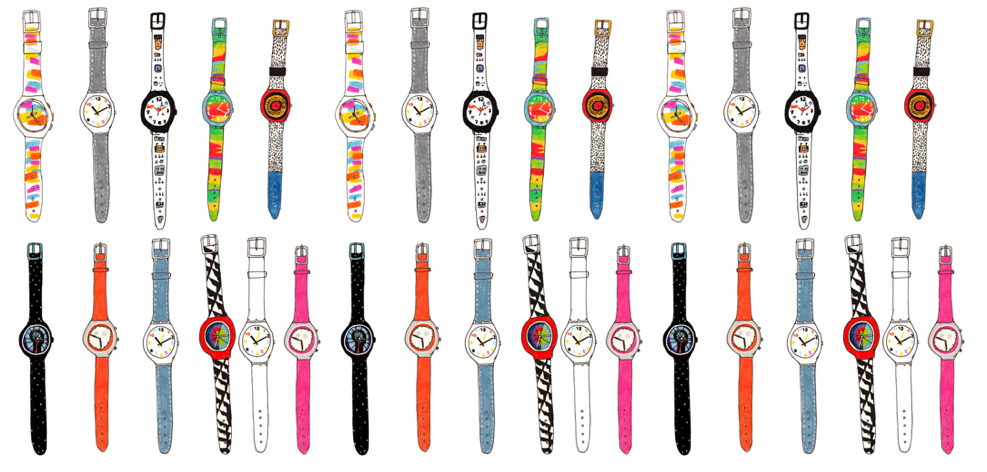Swiss watches usually rank in the higher- priced market segment. But Swatch used a different positioning approach: low price for high quality - but still including quartz accuracy, water and shock resistance.
Let's not forget that positioning is also the process by which marketers try to create an image or identity in the minds of their target market for its brand. This is where the real genius of Swatch's approach takes place: positioning the product as the famous "fashion watch" thereby creating a whole new market, much larger in size than the original watch market.
This positioning was, and still is, very innovative compared to those of the competitors. Swatch watches are to be put in the entry- level category of watches. Made out of plastic, they differ from those more traditional, stainless steel or leather watches. Swatch made the watch a fashion object, to be changed every season. The objective is to offer a watch for everyone, at any moment of his life. To paraphrase N. Hayek's words,"Swatch it about provocation colors, rejection of conventions. Swatch cocks a snook at pretentious and snob people. Swatch is made for rich and for poor, for men and women, for young and for old".
Even if this product is no technological invention per se, it revolutionized the use of the watch. Indeed, by making it a fashion accessory, Swatch managed to alter consumers' behavior. Watches are now consumables and most of all, a way to express yourself, which represents a real added value - it allow the customer to differentiate himself from others.This is why Swatches are so successful: you don't buy one only watch, but several of them, to better express your mood, or better fit with your outfit. This strategy enables small budget buyers to purchase a watch - but knowing that the production for each model is limited, you better buy the Swatch you like the first time you see it.
Based on the analysis of market trends and how market shares were captured, we find that each of the previous leaders captured the market share by innovation: Citizen was able to capture the market share by innovating a new way of creating watches that are cheaper than the industry standard at that time. Seiko was able to capture a big market share by innovating the quartz technology. Swatch was able to capture the market share by finding innovative uses of watches.
(source: http://www.scribd.com/doc/75098982/Swatch-and-Global-Watch-Industry)
By making the watch fashionable and representative of one's personality, Swatch managed to reach a high brand awareness and most of all, a positive emotional connection. These features allow it to differentiate itself from its competitors in a stronger and more durable manner.























